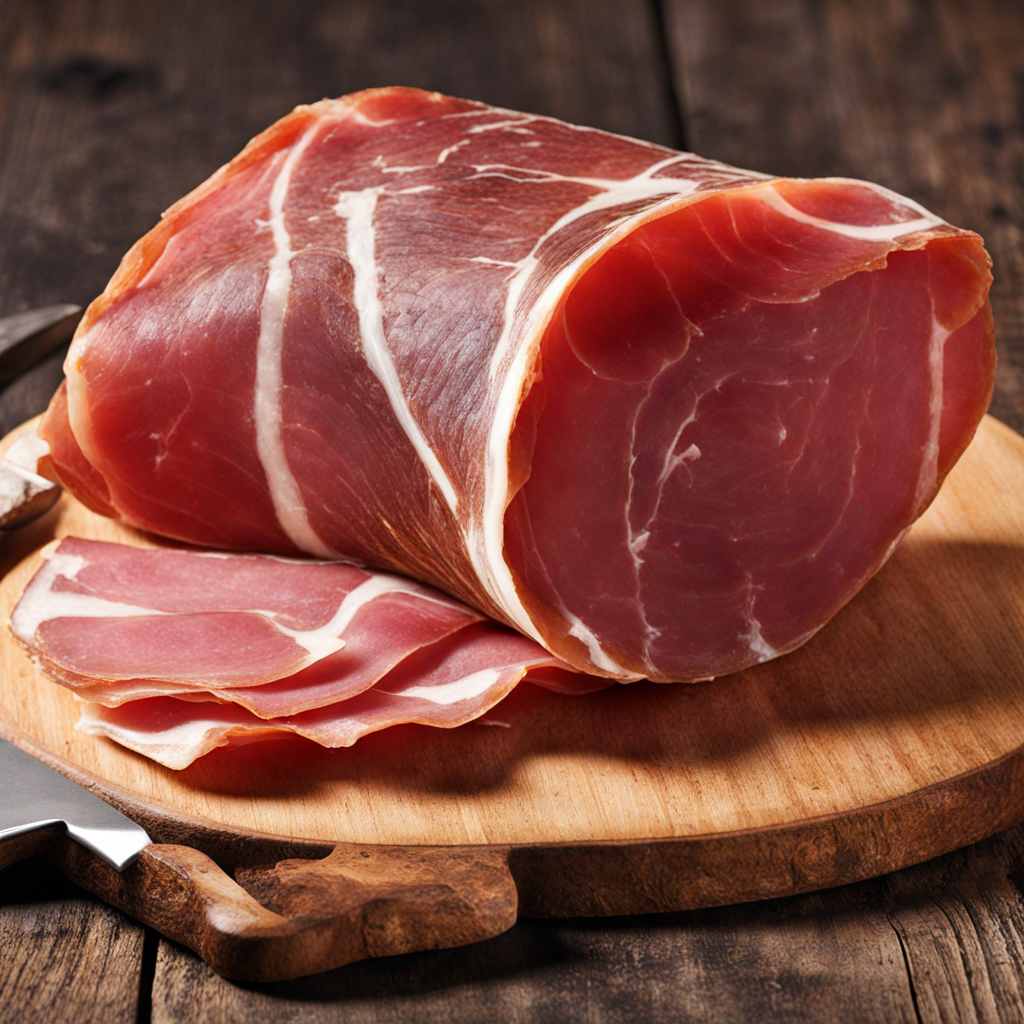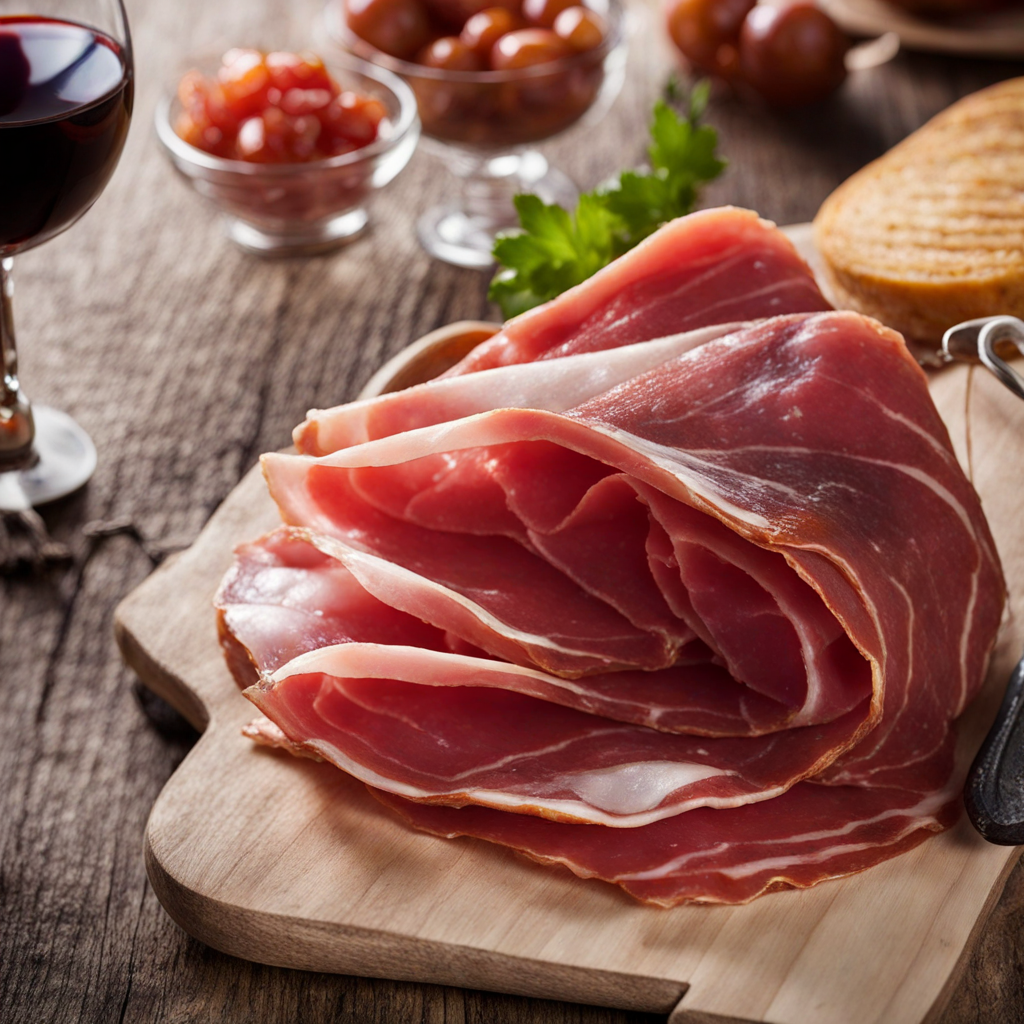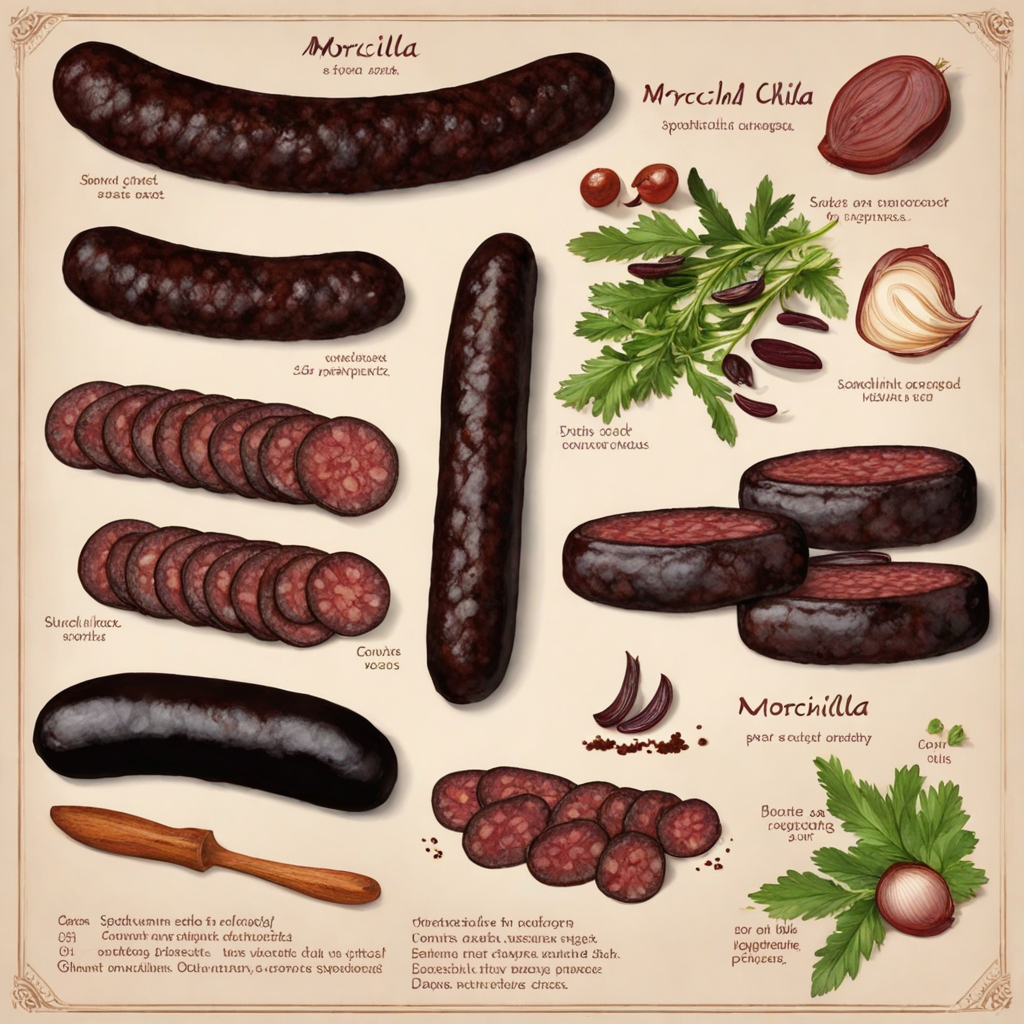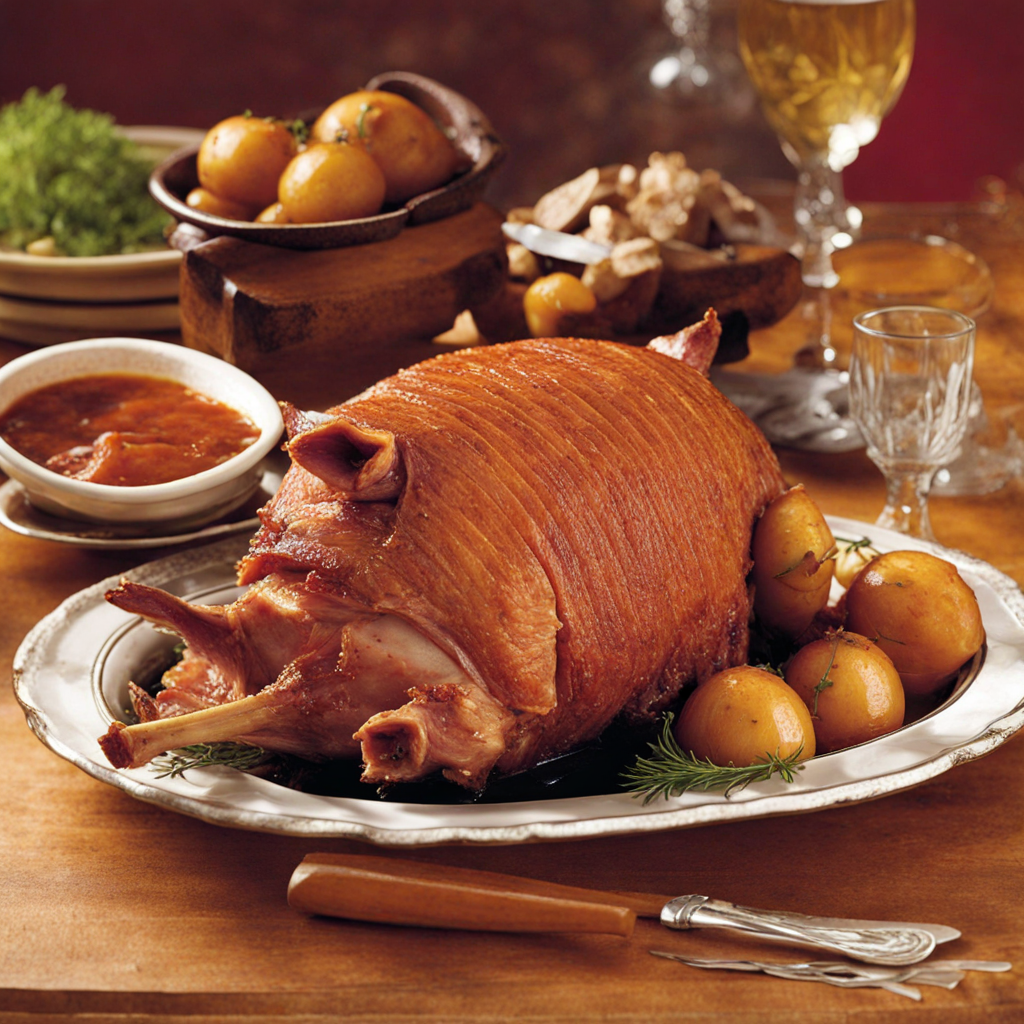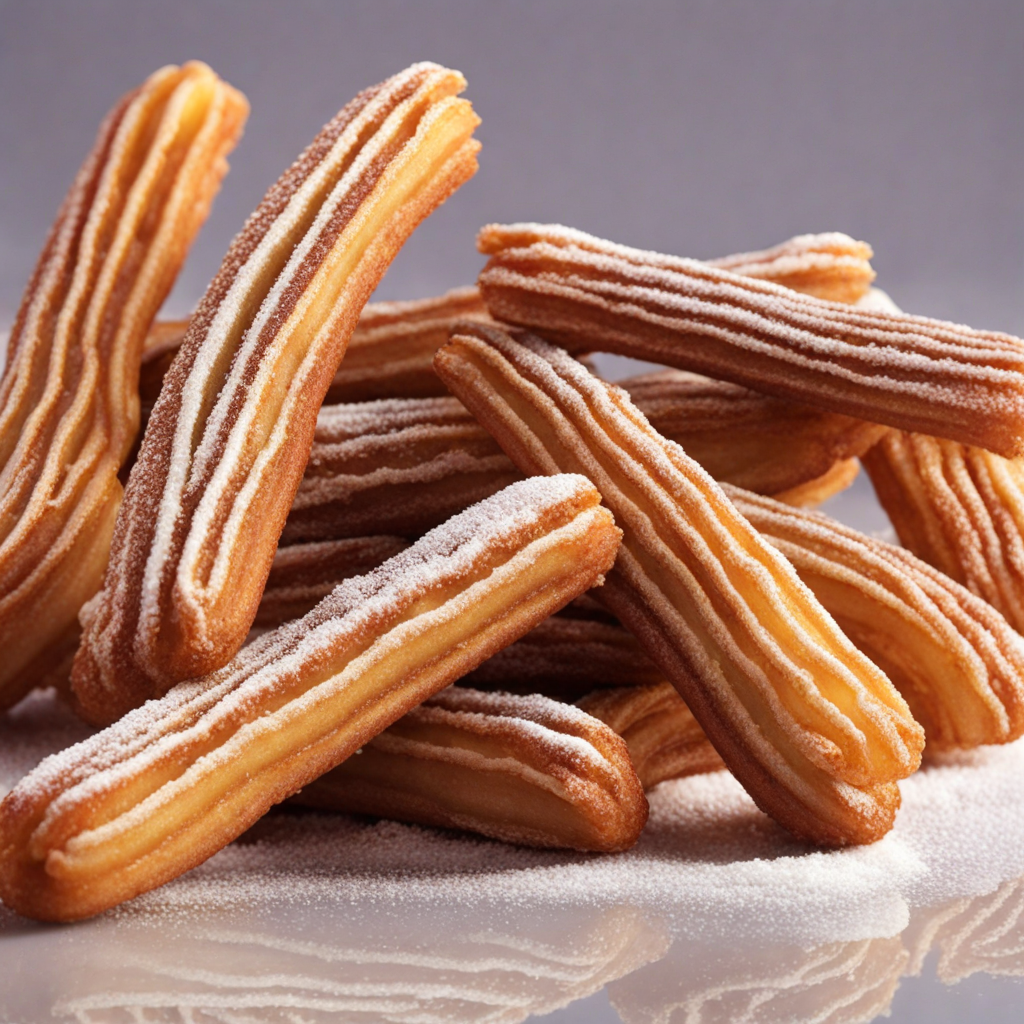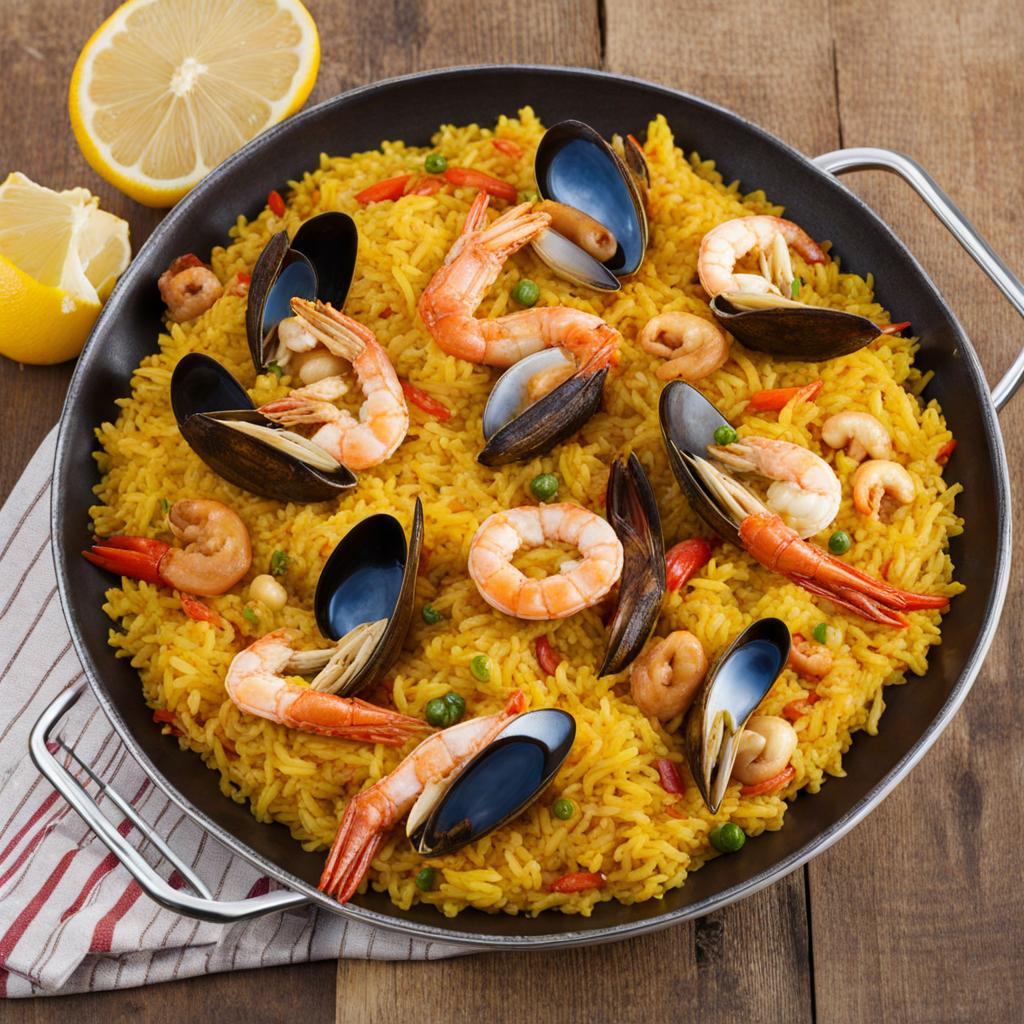Jamón Ibérico
Jamón Ibérico is a luxurious cured ham that hails from Spain, renowned for its rich flavor and melt-in-your-mouth texture. This exquisite delicacy is made from the Iberian breed of pigs, which are often free-range and fed on a diet of acorns, particularly during the montanera season in autumn. The unique diet and lifestyle of these pigs contribute to the ham's distinct nutty flavor and marbled fat, which is essential for its characteristic succulence. The curing process can take anywhere from 24 months to several years, allowing the flavors to develop deeply and complexly, resulting in a product that is both savory and slightly sweet. The appearance of Jamón Ibérico is striking, with its dark mahogany color that speaks to the quality of the meat and the careful aging process. When sliced, the ham reveals a delicate, translucent quality, with veins of rich fat that glisten invitingly. The texture is both firm and tender, making it perfect for savoring on its own or as part of a charcuterie board. Each slice releases a burst of flavor that dances on the palate, offering a combination of umami and sweetness that is unlike any other cured meat. Its versatility allows it to be paired with a variety of accompaniments, from crusty bread and olives to cheeses and wines. Enjoying Jamón Ibérico is an experience that engages all the senses. The aroma is intoxicating, with hints of earthiness and nuttiness that beckon you to take a bite. When you taste it, the initial saltiness is beautifully balanced by the sweetness of the fat, creating a lingering finish that keeps you coming back for more. Whether enjoyed at a tapas bar, in a gourmet restaurant, or at home, Jamón Ibérico embodies the essence of Spanish culinary tradition and is a must-try for any adventurous food lover looking to explore new flavors.
How It Became This Dish
The History of Jamón Ibérico: A Culinary Treasure of Spain Jamón Ibérico, often hailed as one of the finest hams in the world, is a culinary gem that embodies the rich history and culture of Spain. Its roots stretch back to ancient times, and its production has evolved into a sophisticated art form that reflects not only the land's natural bounty but also the traditions of its people. #### Origins: A Legacy of the Iberian Peninsula The story of Jamón Ibérico begins in the Iberian Peninsula, where the indigenous Iberian pigs roamed freely. These pigs, known for their unique genetic traits, were already being domesticated by the Romans around 200 BC. The Romans recognized the quality of the local pig breeds and began to refine their breeding and curing techniques. However, it was the Moorish influence during the 8th century that significantly impacted the way ham was produced and consumed. The word “jamón” itself is derived from the Latin “camburnus,” which refers to the hind leg of a pig. The tradition of curing ham became widespread in southern Spain, particularly in regions like Extremadura and Andalusia, where the climate and geography are ideal for producing high-quality hams. #### The Cultural Significance of Jamón Ibérico Jamón Ibérico is more than just a food item; it is a symbol of Spanish culture and identity. It represents the deep-rooted traditions of family, celebration, and hospitality. In Spain, sharing a plate of Jamón Ibérico is a communal activity, often accompanied by wine and conversation. The preparation and consumption of this delicacy are steeped in rituals that reflect the Spanish way of life. The cultural significance of Jamón Ibérico is particularly evident during festivals and special occasions. It often takes center stage during celebrations such as weddings, holidays, and family gatherings, where it is served as part of a larger spread that showcases the region's culinary heritage. The ham is not just a dish; it is a source of pride for many Spanish families, passed down through generations. #### The Evolution of Production Techniques The production of Jamón Ibérico has undergone significant changes over the centuries, particularly in its curing and aging processes. Traditionally, the ham was cured using simple methods, with salt being the primary preservative. However, as knowledge and techniques evolved, so too did the complexity of the curing process. Today, there are several classifications of Jamón Ibérico, primarily determined by the pig's diet and breed. The highest quality, known as "Jamón Ibérico de Bellota," comes from the black Iberian pigs that are allowed to roam freely in oak forests, feeding on acorns (bellotas). This diet not only enhances the flavor of the ham but also contributes to its unique marbling and melt-in-the-mouth texture. The curing process itself is meticulous and can last anywhere from 24 months to several years, depending on the desired flavor and texture. The hams are salted and then hung to dry in special curing houses, known as "secaderos," where they are exposed to the natural elements of the region. This lengthy aging process allows the flavors to develop and intensify, resulting in a product that is rich, complex, and deeply satisfying. #### Regulatory Standards and Recognition In the late 20th century, as the popularity of Jamón Ibérico grew both in Spain and internationally, the need for regulation and standardization became apparent. In 2014, the European Union recognized Jamón Ibérico as a Protected Designation of Origin (PDO), which serves to safeguard the quality and authenticity of the product. This designation ensures that only hams produced in specific regions of Spain, following strict guidelines regarding breeding, feeding, and curing, can be labeled as Jamón Ibérico. The regulatory framework has also helped to combat fraud and mislabeling, particularly as the demand for this exquisite ham has increased globally. As a result, consumers can enjoy Jamón Ibérico with confidence, knowing that they are experiencing a true representation of Spanish culinary heritage. #### Jamón Ibérico in Contemporary Cuisine In recent years, Jamón Ibérico has transcended its traditional roles and found a place in contemporary culinary practices. Chefs around the world are incorporating this luxurious ingredient into innovative dishes, from tapas to gourmet entrees. Its versatility allows it to complement a wide range of flavors, making it a favorite among culinary professionals and food enthusiasts alike. Moreover, the rise of food tourism has contributed to the global appreciation of Jamón Ibérico. Many travelers now seek out authentic experiences in Spain, with visits to traditional curing houses and tastings becoming integral parts of their journeys. This trend not only supports local economies but also fosters a deeper understanding of the cultural significance of this iconic food. #### Conclusion: A Timeless Craft The story of Jamón Ibérico is one of tradition, artistry, and cultural significance. From its ancient origins in the Iberian Peninsula to its status as a global culinary treasure, this exquisite ham encapsulates the essence of Spanish identity. Its production is a time-honored craft, honed over centuries, that reflects the deep connection between the land, the animals, and the people who cherish this remarkable food. As we continue to celebrate and share Jamón Ibérico, we connect with the past and honor the generations who have contributed to its legacy. Whether enjoyed in a rustic tapas bar or as part of an elaborate feast, Jamón Ibérico remains a testament to the enduring power of food to bring people together and tell the story of a culture.
You may like
Discover local flavors from Spain


